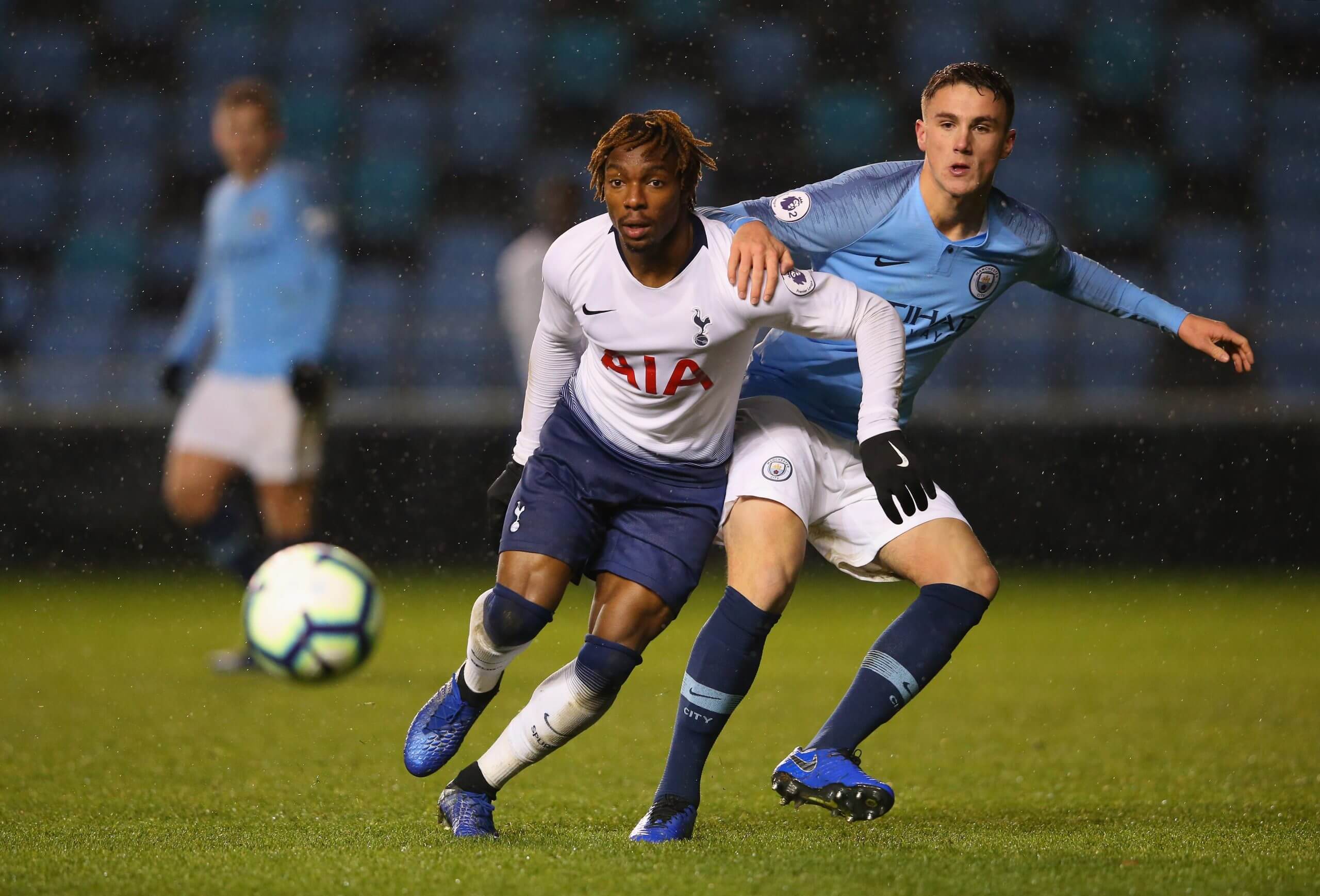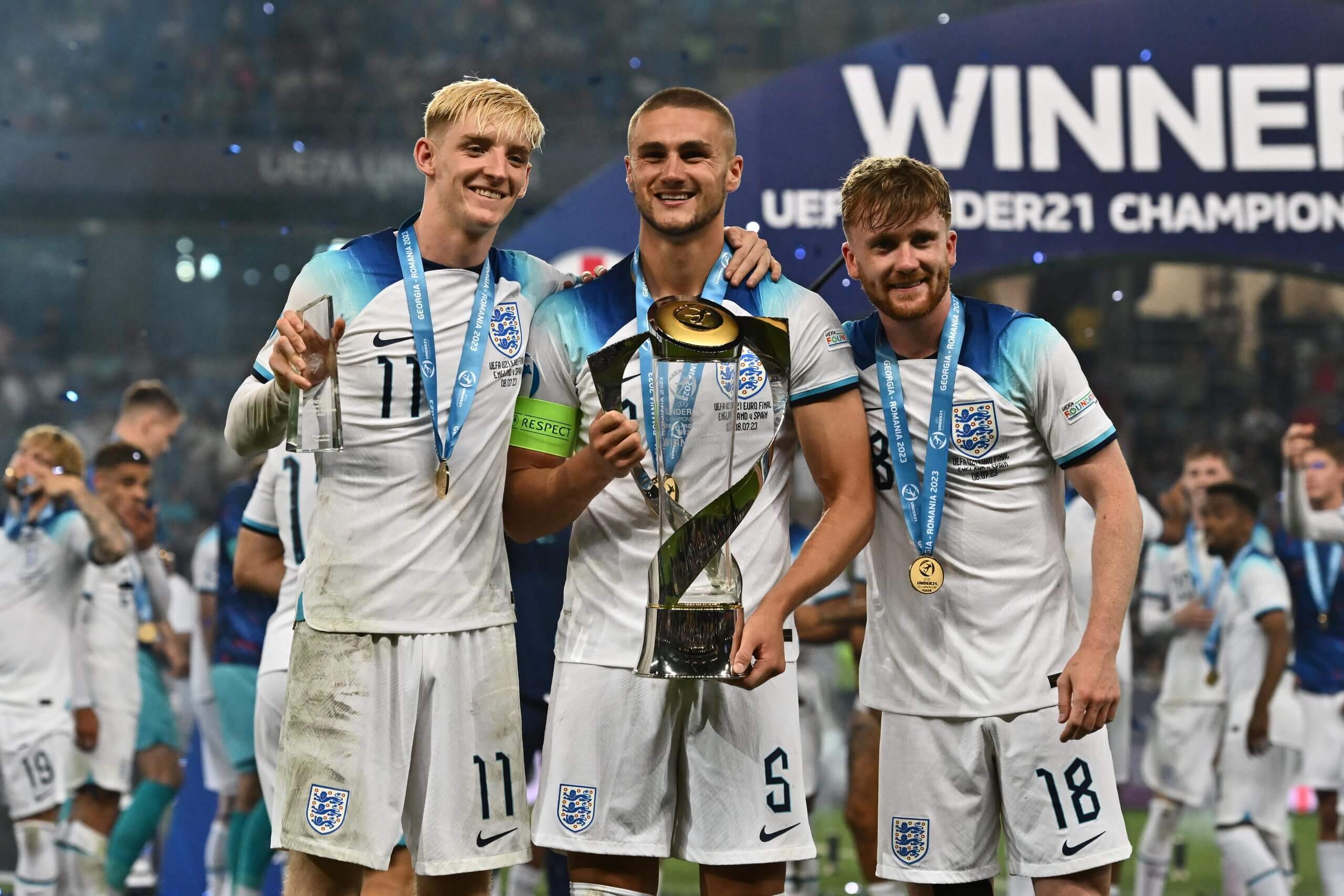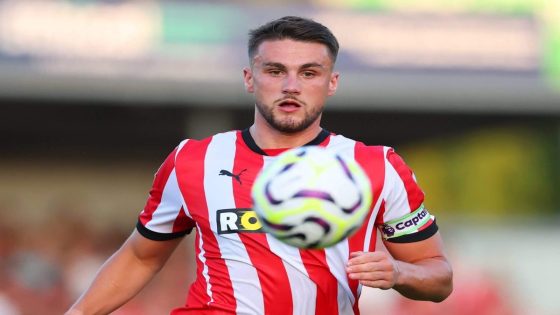A senior England call-up for Taylor Harwood-Bellis has, in many ways, been a matter of when not if.
“One of the things why I was so desperate to win is to continue working with him because I think he has such a high ceiling,” Southampton coach Russell Martin told reporters after securing promotion to the Premier League via the play-offs. “I really believe he’ll play for his country many times. I hope we can help him on his journey to get there.”
That faith has now been justified, with Harwood-Bellis named in the England squad for their Nations League games against Greece next Thursday and the Republic of Ireland the following Sunday.
Shortly after England were dumped out of the 2010 World Cup with a 4-1 round-of-16 defeat by Germany, the FA introduced the “homegrown” rule. Aimed at creating a pathway for young English players, the rule required at least eight players of a 25-man squad to have been developed by that club, which was defined as spending a minimum of three years between the ages of 15 and 21 in their youth teams.
A year later, the Premier League released the Elite Player Performance Plan (EPPP), detailing the restructuring of academies in a blueprint to develop “more and better” homegrown players. The thought was that England and English academies had a counterproductive infatuation with more physically developed players and would, moving forward, look towards more technically gifted players who did not dominate physically in youth football.

Twenty years ago, Harwood-Bellis, more technically gifted than a physical powerhouse, might have been moved into midfield, shunted out to full-back, or lost in the academy system altogether. But coming through Manchester City’s academy and playing in England’s youth teams, he has developed into one of the most promising ball-playing centre-backs in the country.
The 6ft 2in captain of England’s U21 side is among the clearest examples of EPPP’s success and the FA’s pathway in practice — and his association with the national team and England interim coach Lee Carsley played an influential part in his selection ahead of more experienced options, like Brighton & Hove Albion’s Lewis Dunk.
Harwood-Bellis, 22, has been an England regular through the age groups since the under-16 level and captained England’s under-17s at the 2019 European Championship in Ireland. However, his most influential contribution in an England shirt so far came under Carsley, as he captained England U21s to victory in the European Championship in 2023. He started five out of the six matches, partnering Levi Colwill ahead of Everton’s Jarrad Branthwaite.

“I’ve known Taylor from Man City and captaining the under-21s,” Carsley said at today’s squad announcement. “Having a successful summer with promotion and playing in the Premier League week in and week out, he’s a player that really deserves it. He’s an outstanding captain and a brilliant example to the rest of the players in the under-21s squad.”
Harwood-Bellis left Manchester City permanently to join Southampton in the summer, ending a 16-year association with his boyhood club after signing to the club’s academy as a six-year-old in 2008. While he did not make a Premier League appearance for the league champions, he left this summer having appeared in the Carabao Cup, FA Cup and Champions League under Pep Guardiola. But it was his loan spells away from the Etihad that made him.
Following periods at Blackburn Rovers, Anderlecht and Stoke City as a teenager, Harwood-Bellis followed City legend Vincent Kompany to Burnley in the Championship in the 2022-23 season (having previously spent six months on loan under him at Anderlecht), where he established himself as a key player as the Lancashire side won the league title with 101 points.
Despite it being his first full season as a starter in England, Harwood-Bellis impressed as a strong and mature character. He quickly became a favourite among fans who rated his obvious leadership credentials. He was also unafraid to make mistakes as Kompany required him to take risks in possession and build from the back. Over the season, he formed an essential partnership with Jordan Beyer at the heart of defence as Burnley conceded just 35 goals, a league-best defensive record.
Last season, he took another step towards the Premier League and international recognition. Harwood-Bellis thrived under Martin, one of England’s most possession-oriented coaches. He ranked in the 99th percentile for passes attempted (96.1 per 90) and pass completion (92.1 per cent) among his peers. Often, those are the numbers of a player who does not take many risks in possession, but Harwood-Bellis also ranks in the 89th percentile of central defenders playing progressive passes (4.9), indicating a strong ability to complete potentially risky passes.

While Southampton have struggled with the transition to the Premier League, collecting just four points from their opening 10 matches, Harwood-Bellis’ displays suggest he is here to stay. He marshalled Southampton’s back line to their first win and clean sheet of the season last weekend, a 1-0 victory over Everton at St. Mary’s Stadium, and has scored three goals in all competitions, including the opener in the Carabao Cup fourth round 3-2 win over Stoke.
Naturally, given Southampton’s place in the Premier League table and Harwood-Bellis’ recent emergence in England’s top flight, his call-up by Carsley ranked as one of the more surprising selections.
But perhaps it shouldn’t be seen in those terms. He has been an influential player under Carsley for England Under-21s, a coach who believes strongly in the pathway from youth to senior football at the national team level and replaces the injured John Stones, a player with whom he shares footballing similarities.
And with Stones and Harry Maguire in their thirties, Harwood-Bellis in a senior England shirt could be a glimpse into the national team’s not-so-distant future.
(Top photo: Dan Istitene/Getty Images)





